Raising the Pagan Child
Karen Charboneau HarrisonShare
© Copyright 2023 Karen Charboneau-Harrison, All Rights Reserved.
Bringing a new life onto this planet is a long-term commitment and the challenges inherent in that commitment are multiplied a thousand-fold when the child is raised as a Pagan. Most of us live in the Judeo-Christian American culture. Its values and judgments are present in everything we experience, sometimes openly and sometimes covertly. The larger community assumes that everyone sees the world in a black/white, either/or way while ignoring diversity and options that can be explored and employed in living a fuller life. It assumes, too, that we have only one life to live, not many lives within which to learn our lessons and that the rules promoted by dominant religions are 'natural laws' rather than man-made ones. It assumes that all of our information comes through only the five physical senses and that 'magic' is merely Hollywood's special effects. It assumes that we are all victims of 'original sin' and without personal responsibility and power in the direction of our lives. It also assumes that children have no power in their own right and, ultimately, that anything different than all these assumptions is suspect, threatening, frightening or merely foolish.
The larger community celebrates and reinforces its world view in many ways. Holidays like Christmas and Easter, originally religious observances, are upheld by secular governments as national holidays, for example. In the American Pledge of Allegiance, we pledge loyalty to a nation under one God: that God is not specifically designated as the Judeo-Christian Yahweh, but we all know who is being invoked.
While we Pagans abide by, enjoy the rights of, and are responsible for upholding our greater society's rules and regulations (after all, they make it possible for diverse groups of people to live together), the Pagan world view is different from our dominant culture's because we differentiate between the man-made laws of human society and the natural laws of the universe. The first set of laws deal with questions and problems of community living, but universal laws explain the underpinnings of life experience and spiritual advancement. We Pagans view magick as a natural way to influence our environment and we use it within a strong ethical framework. We regard our children as persons in their own right who strive just as adults do to understand their power and responsibility and to grow mentally, physically, emotionally and spiritually. We see ourselves as part of the whole world, affecting the planet and each other but with no inherent right to rule Mother Earth or to determine the quality of life for her inhabitants.
Such basic differences in world view make Pagan parenting challenging and difficult. How do we guide our children wisely and nourish them spiritually in a culture that at best tolerates us and at its worst vilifies us? Harsh though it may sound, first we must accept that we are raising our children in an alien culture, one that has many views and values that may conflict with ours.
However, we are not the only ones in this predicament: there are Buddhist parents, traditional Native American parents, Hindu parents and Muslim parents all feeling their own degrees of alienation. And although the dominant culture claims to be based on 'Judeo-Christian' concepts, Christian values predominate; therefore, Jewish parents face many of the same problems we do as well. Yet one difference between the Pagan parent and the parents of other less 'traditional' religious traditions is that the other traditions tend to live within their own subculture which is often more cohesive and unified than their Pagan counterpart. The Jewish, Muslim, Hindu or Buddhist subcultures contain many friends and relatives who are following the same beliefs, customs and worldview. These subcultures recognize the need for cohesion and actively work to nurture and maintain it. They may not be totally understood by society at large, but they are usually not feared. Pagans, on the other hand, have centuries of 'bad press' to combat and we do not want our children on that battlefield. Depending on our circumstances, we may be the only Pagans in the area or the only Pagans with children within our community. This presents additional obstacles because we may feel we have no support. We have to work diligently within our own immediate families to teach, celebrate and reinforce our spiritual beliefs and the Pagan view of how the universe works. Although the prospect may be daunting at times, we CAN create special learning experiences with our children and share with them their Pagan heritage without making them feel alien, ostracized or strange.
Pagan parents must take this responsibility. Ours is a religion of this world and universe, not one focused on an abstract afterlife. Utilizing everyday happenings to teach our ways, beliefs and views can be one of our simplest, most effective tools. A Pagan parent must stay focused in the here-and-now in order to observe and teach his or her children about the inner and outer worlds they inhabit. One family can do this in its own home, but sometimes it is more fun and easier to do if you can organize a group of like-minded parents to develop a teaching plan. In cities with large Pagan communities, like Denver, this may be more feasible but if you live in a small town and have access to the Internet there are several resources for you as well (see the list of recommended books at the end of this article).
Halloween, Christmas/Hannukah and Easter can be confusing times for the Pagan family. Many Pagan parents came from Christian or Jewish households and they may fondly remember their earlier seasonal holiday rituals. Most of our Pagan children's friends will be celebrating these holidays and our children can feel left out if we do not acknowledge these times, too. By remembering that both Christmas and Easter are Pagan in origin and by celebrating the things these holidays have in common in both Pagan and Judeo-Christian traditions we can have the best of both worlds and teach our children about the universality of religious expression while imparting to our children the Pagan roots of these celebrations.
Celebrate Yule with your children by telling the stories of the birth of the Sun child, why we have Yule trees and the story of the Yule log. Sing the more Pagan-oriented carols ("Deck the Halls" for example) or change the words from the 'traditional' ones. But start your celebration on the Winter Solstice. If you have relatives with whom you traditionally spend Christmas Eve or Christmas Day feasting and opening presents, start the season in your Pagan household by opening a gift each day beginning with the Solstice and culminating with Christmas.
Easter can be dealt with the same way. Talk with your children about the beginnings of spring and how the traditions of Easter eggs, bunnies and chicks originated. Plant some easy-sprouting seeds which can represent a child's wish. But do it on the Spring Equinox and follow up by giving your child a basket of goodies on Easter morning.
Halloween can present a different kind of problem. For us, it is one of our most sacred and important holidays, yet we are surrounded by green-faced, cardboard 'witches' hanging over candy displays, plus offensive greeting cards. Story hour at school often involves a scary tale with a 'witch' as a villain and our children receive coloring handouts at school that depict at least one flying, warty 'witch'. It is inappropriate to expect your child to challenge these misrepresentations at school or for you to arrive fuming to confront the teacher or principal. Tempting though it may be to forego public confrontations, the proper response is to deal with these inconsistencies in the privacy of your own home. Tell your children that these images are produced by people who do not really know anything about real Witches and that no hurt or insult is intended. Your can also explain how current North American Halloween customs developed in order to show them how other people do celebrate an important holiday with us.
In later articles about Pagan Parenting I'll be discussing subjects such as how to handle discretion in families where your immediate family is Pagan while grandparents and other relatives are not, bringing children into ritual and ideas for celebrating each Sabbat with children. Since we're approaching Samhain, let's start there:
Samhain begins the Celtic New Year, the time when 'the veil between the worlds is thin' and we are more sensitive to our inner selves and our psychic senses. Our ancestors often return to visit their homes and families and we can communicate with them to help them pass on, learn lessons from them and more. Seasonal rites celebrate the beginning of the rule of the God, the Lord of the Underworld, and Keeper of the Gate of Death. Our ancestors finished preserving their winter store houses of food at this time and began the slaughter of animals that would feed them throughout the winter. The types of Magick done at this time are for the preservation through the winter months of the wild animals and winter food stores and to strengthen the Sun for his rebirth at Yule.
Some suggestions for Samhain celebrations including children:
- Perform simple divinations for the coming year using the pendulum, scrying or candle flame gazing.
- Talk about relatives, pets or friends who have passed on and what we learned from them or enjoyed about them.
- Tell stories about ghosts, using the stories to illustrate how children might deal with fears.
- Talk about the origin of Halloween customs. Trick or treating goes back to the beginning of the Iron Age when farm dwellers left offerings of milk, cheese or other treats to discourage the forest dwellers from pilfering. Leave some treats outside or in the hearth for the elves and fairy folk in your home. Costume parties developed during the Middle Ages so that on Halloween ('hallow' or holy evening) active ghosts and goblins could not recognize the people inside their homes celebrating the new year and therefore could not bother them. Jack-o'-lanterns developed from the custom of carving out turnips and placing candles in them to prevent the wind from blowing out the flame when people traveled at night.
- Make dream pillows for dreams of the coming year: Take a piece of cloth about 6 inches square. Make a mixture of any or all of these herbs/essential oils: Lavender, anise, mugwort, jasmine, white sandalwood, lily of the valley, lilac, chamomile, hops, skullcap and poppy. To prepare the herb/oil mixture, mix ¼ cup of each of the herbs desired, then begin adding your chosen oils to the center of the dry herbs a few drops at a time. Knead the oils in gently with a spoon until the scent is as strong as you like. If you wish to sew your pillow, fold the cloth in half and sew the long side and one of the short ones. Turn it inside out so that your seams are inside. Stuff the pillow with the herb mixture then finish it off with a slip stitch on the remaining opening. If you prefer not to sew, lay the cloth flat and place the herb mixture in the center. Take two opposing corners and bring them together. Do the same with the remaining two corners. Packing the herbs tightly in the middle, twist the corners up together and bind them with a ribbon. Dream pillows can help children remember dreams, sleep more deeply or ease dreams in the case of children with nightmares.
| Recommended Products | |
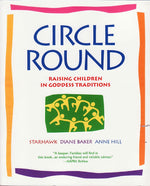 Circle Round Circle Round |
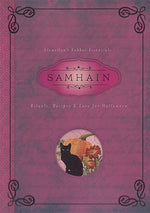 Samhain Samhain |
 Old Magic of Christmas Old Magic of Christmas |
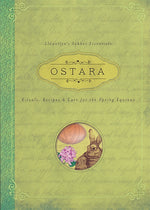 Ostara Ostara |
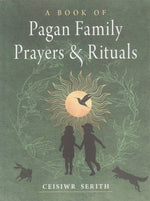 Book of Pagan Family Prayers and Rituals Book of Pagan Family Prayers and Rituals |
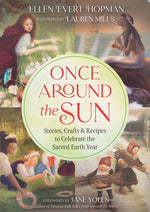 Once Around the Sun Once Around the Sun |
